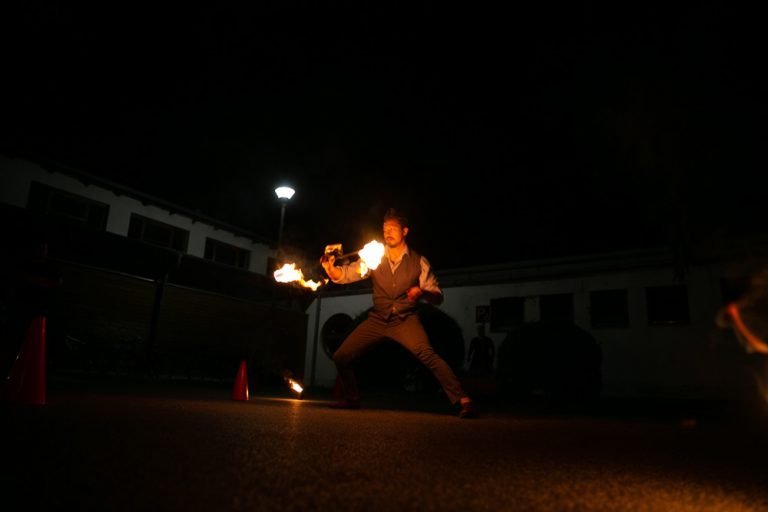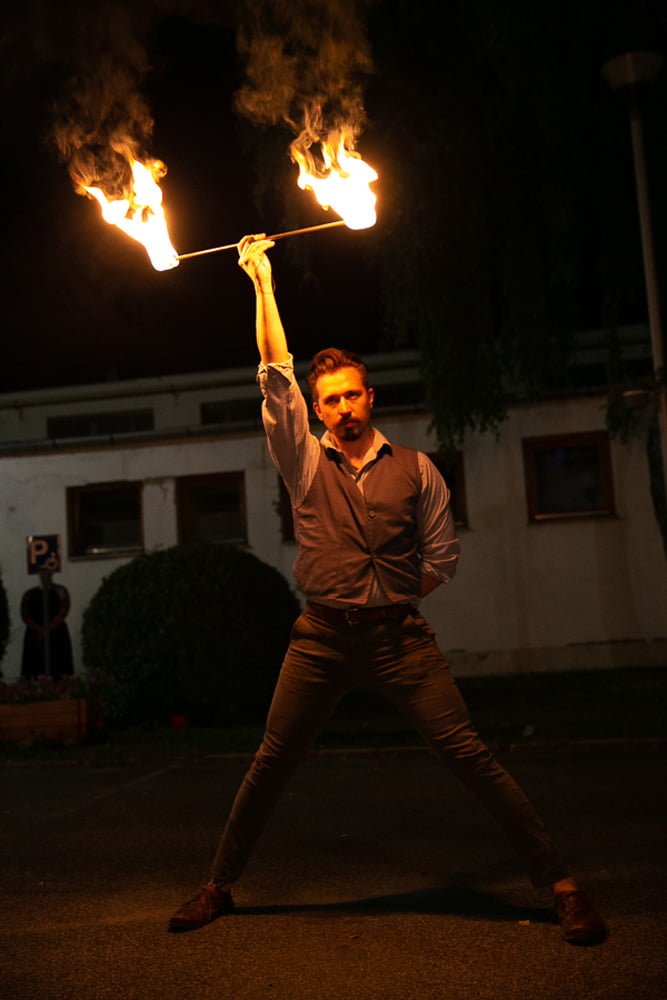Fire dance photography is a breathtaking fusion of movement, emotion, and elemental power. Capturing these performances requires more than just technical skills—it demands intuition, timing, and creativity. This guide will walk you through the essential techniques and tools you need to capture truly stunning fire dance images that reflect the passion and artistry behind every performance.
Choosing the Right Equipment
Your gear plays a major role in the success of your fire dance photography. Because fire performances often take place in low-light conditions with fast motion, it’s crucial to have the right setup. Here’s what you’ll need:
- Manual Camera: A DSLR or mirrorless camera with full manual control is ideal for adjusting shutter speed, aperture, and ISO.
- Fast Lens: A lens with a wide aperture (such as f/1.4 or f/2.8) allows more light into the camera, helping you capture crisp images in dark environments.
- Tripod: Essential for stability during long exposures and to prevent camera shake.
- Remote Shutter Release: Helps avoid any movement when taking the shot—especially useful during slower shutter speed captures.
Optimizing Camera Settings for Fire
Fire is a dynamic light source. To capture its motion and glow effectively, fine-tune your camera settings:
- Aperture: Use a wide aperture (e.g., f/1.8 – f/2.8) to maximize light intake and create a shallow depth of field that isolates the dancer from the background.
- Shutter Speed: Experiment with slower shutter speeds (1/15 to 1/60 seconds) to capture motion trails of the flames, or use faster speeds (1/200+) to freeze dramatic moments.
- ISO: Set your ISO high enough to get the exposure right, but not so high that it introduces excess noise—usually between 800–3200 depending on your camera’s capabilities.
Fire is unpredictable. Shoot in RAW to give yourself maximum flexibility in post-processing, especially when adjusting highlights and shadows.
Mastering Composition Techniques
Composition is where technical skill meets creativity. To create compelling images:
- Try multiple angles: Shoot from low or high vantage points to add depth and drama.
- Use leading lines: Guide the viewer’s eye toward the dancer and flames.
- Play with negative space: Let the darkness around the fire emphasize the light and motion.
- Capture symmetry and flow: Fire dancers often move in circular or fluid patterns—use this to create balanced, eye-pleasing compositions.
“Composition turns a photo from a snapshot into a story. Let the flames lead your framing.”
Lighting and the Fire Element
Fire is both subject and light source. Embrace it creatively:
- Use fire as your primary light: The natural glow provides mood and contrast that artificial lighting can’t replicate.
- Watch the direction: Side-lighting from fire can highlight textures and create striking shadows.
- Avoid flash: Flash disrupts the ambiance and may distract performers or wash out fire’s natural tones.
Take multiple shots to account for the shifting intensity and movement of the flames. No two seconds are alike in a fire performance!
Timing and Capturing the Moment
In fire dance photography, timing is everything. The best photos are often those that capture a split-second moment of intensity or grace. To nail your timing:
- Anticipate movements: Familiarize yourself with common fire dance patterns to predict key moments.
- Focus on expressions: Capture the emotion and focus in the dancer’s face to bring the photo to life.
- Continuous shooting mode: Use burst mode to capture several frames in quick succession.
Post-Processing for Fire Dance Imagery
Editing is where good images become great. Use post-processing tools to enhance contrast, bring out color tones, and correct any exposure issues.
Post-Processing Tips:
- Adjust highlights and shadows: Bring back lost flame detail or recover darker areas of the image.
- Enhance warmth: Boost oranges and reds to make the fire pop.
- Sharpen details: Emphasize the crispness of motion and texture.
- Crop creatively: Reframe images to improve composition or focus on key elements.
Don’t over-edit—retain the raw energy and authenticity of the performance. Subtle adjustments often yield the most powerful results.
Conclusion: Embrace the Art of Fire Dance Photography
Fire dance photography challenges you to balance technical skill with creative instinct. It invites you to chase movement, light, and emotion in one captivating frame. With the right equipment, settings, timing, and post-processing, you can create images that not only document a performance but tell its story.
Are you inspired to explore the fiery world of dance? Book a professional fire performer for your next event and experience the magic up close—or start your own journey into fire dance photography today.




